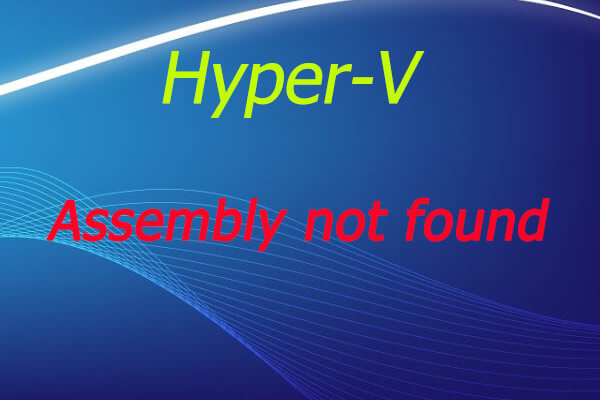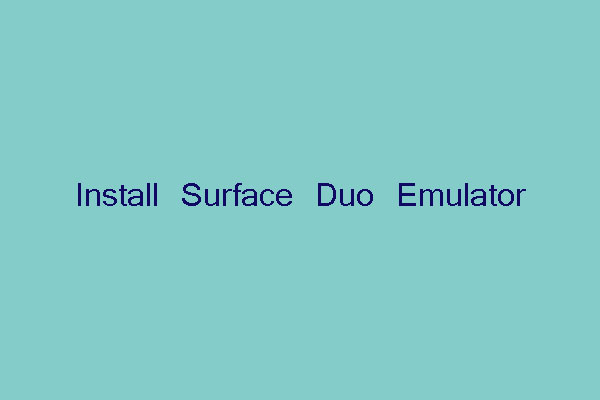Windows 10X Emulator is now out for its first public preview. Do you know what hardware and software requirements it needs for installation on Windows 10? In this post, MiniTool introduces this to you in detail.
Windows 10X Emulator Minimum Requirements
Last November, Microsoft showcased its first dual-screen device — Surface Neo (powered by Windows 10X). Now, its emulator is out for its first public preview. If you want to experience it, you can install the Windows 10X Emulator on your Windows 10 PC.
However, just like how an OS needs minimum hardware and software to run, so does the emulator. To install the emulator, your device should meet the Windows 10X Emulator minimum requirements.
1. Software Requirements
- Windows 10 Preview Build: The Windows 10X Emulator is a Public Preview product, so your Windows 10 PC also needs to run on Windows Insider Program. It works with Windows 10 Pro, Enterprise, and Education (x64). As for the build number needed to test, the minimum one is 19555.
- Microsoft Emulator: This emulator allows developers to test UWP and regular WIN32 Apps for dual-screen scenarios. In addition, this emulator offers new Native Windows APIs for dual-screen development, which allows app to span the two screens, adapt according to the hinge position, and take advantage of Windows 10X.
Note: You can download the Microsoft emulator from Microsoft Store. But, please note that this emulator should work with the Hyper-V emulator. You should install Hyper-V first.
2. Hardware Requirements
- CPU: 64-bit CPU with four cores that will be dedicated to the emulator.
- RAM: A minimum of 8GB RAM (16GB recommended). 4 GB will be taken by the emulator.
- Storage: 15 GB of free disk space for VHDX + diff disk (SSD recommended).
- GPU: Hyper-V enabled and dedicated GPU (Supports DirectX 11.0 or later and WDDM 2.4 graphics driver or later).
To enable Hyper-V, you need support for hardware-assisted virtualization. To check for hardware-level virtualization, please follow the steps below:
- Press “Windows + R” keys to open Run.
- Type “cmd” into the Run dialogue and then press Enter.
- In the command prompt window, type “exe” command and then press Enter.
- After the PC displays the result, scroll till the end, and check four items behind the Hyper-V Requirements. They all should be YES for it to support hardware-level virtualization.

Note: If the four requirements are No, boot into the BIOS/UEFI, and check if there is an option to enable hardware virtualization. If you don’t see any option, then it means your Windows 10 computer doesn’t support it.
Preview SDK Requirements for Microsoft Surface Duo
Microsoft has released a developer preview SDK for its foldable device— Surface Duo. The SDK offers Native Java APIs which are specific to Surface Duo and allows the developer to build apps that work on dual-screen and foldable devices.
To use the Preview SDK, your device should meet some requirements.
1. Android Studio Requirement
- System: Microsoft Windows 7/8/10 (64-bit). The Android Emulator only supports 64-bit Windows.
- RAM: 4 GB RAM minimum, 8 GB RAM recommended.
- Storage: 2 GB of available disk space minimum, 4 GB Recommended (500 MB for IDE + 1.5 GB for Android SDK and emulator system image).
- Display: 1280 x 800 minimum screen resolution.
2. Android Emulator Requirement
- Version: SDK Tools 26.1.1 or higher.
- CPU: 64-bit processor.
- Windows: CPU with UG (unrestricted guest) support.
- HAXM: HAXM 6.2.1 or later (HAXM 7.2.0 or later recommended).
- Webcam: It should have the capability to capture 720p frames if you want to use it.
Intel HAXM (Hardware Accelerated Execution Manager) is a hardware-assisted virtualization engine. Used in conjunction with the Android SDK Manager, HAXM can accelerate Android application simulation on systems that support Intel virtualization technology.
To use the hardware acceleration on Windows or Linux, your CPU should meet one of the following requirements:
- Intel processor: It should support for Intel VT-x, Intel EM64T (Intel 64), and Execute Disable (XD) Bit functionality.
- AMD processor on Linux: AMD processor with support for AMD Virtualization (AMD-V) and Supplemental Streaming SIMD Extensions 3 (SSSE3).
- AMD processor on Windows: Android Studio 3.2 or higher and Windows 10 April 2018 release or higher for Windows Hypervisor Platform (WHPX) functionality.



User Comments :